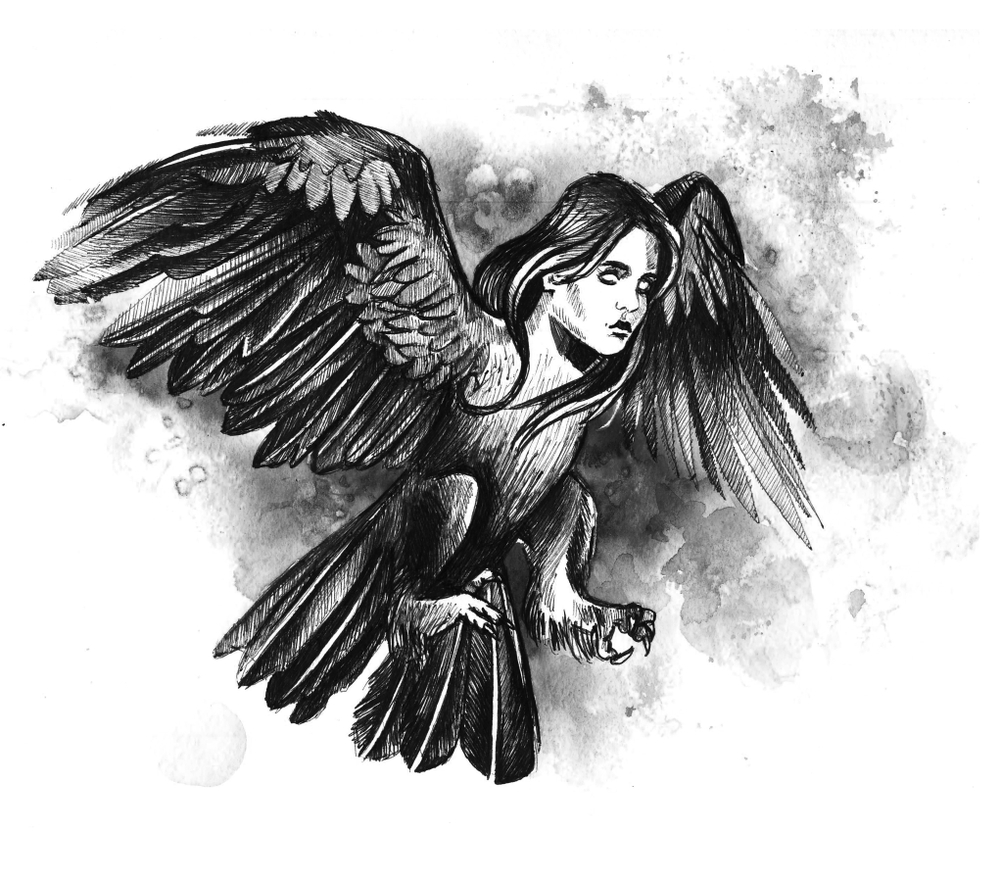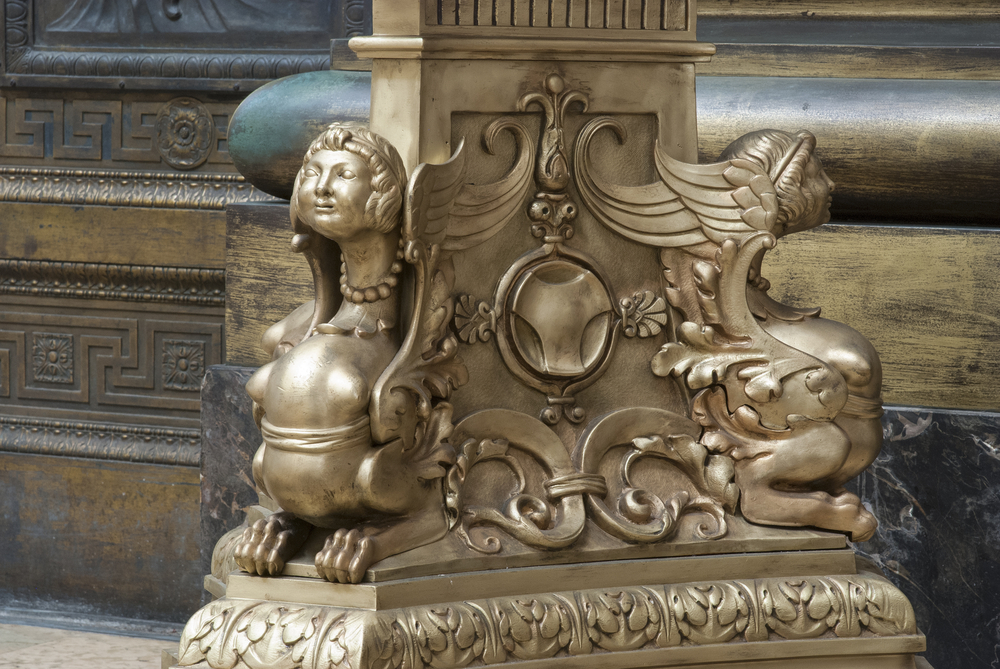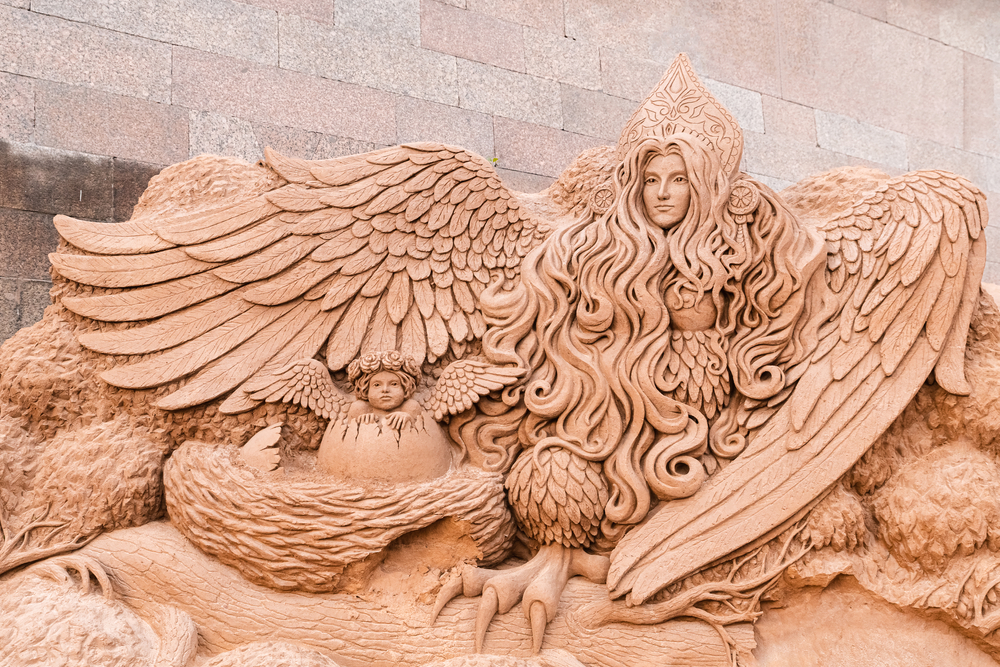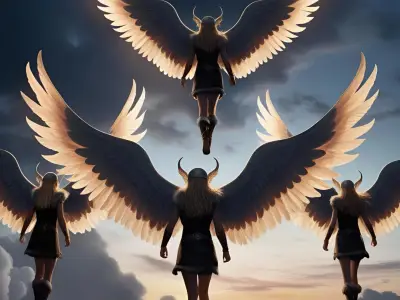Often depicted as fearsome blends of women and birds, Harpies have captivated the imagination of many through the ages. Let’s discover more about these mythical creatures in Greek mythology, exploring their origins, stories, and meanings.
Jump to:
Who Were the Harpies in Mythology?

Harpies in Greek mythology are depicted as hybrids with the body of a bird and the face of a woman. But who exactly were these beings? According to ancient tales, harpies were the daughters of Thaumas and Electra, making them sisters to Iris, the goddess of rainbows. They were known for their swift flight and role as agents of punishment, snatching away people and things from the earth. The names of the three most famous harpies, Aello, Ocypete, and Celaeno, translate to storm swift, swift wing, and the dark one, respectively, highlighting their ferocious and formidable nature.
Recommended for you!
Best SellersLegends Featuring the Harpies
The harpies, often seen as ominous figures in Greek mythology, are central to several legends, each adding layers to their mysterious and formidable persona. Below, we explore three tales that showcase their powers, punishments, and mythological significance.
Harpy and Jason and the Argonauts
One of the most well-known myths involving harpies is their interaction with the hero Jason and his crew of Argonauts. The story goes that King Phineus of Thrace was punished by Zeus for revealing too much of the future to humans. His punishment involved having his food constantly stolen by harpies, leaving him in a state of constant hunger. When Jason and the Argonauts arrived, two of the crew, Zetes and Calais, chased the harpies away. The gods promised them not to harm Phineus again, thus rescuing him from his curse.
The Harpies and Aeneas
In the epic journey of Aeneas, as told by Virgil in the "Aeneid," the harpies make a notable appearance when Aeneas and his crew land in the Strophades. Here, Celaeno, one of the harpies, delivers a prophecy of hardship and hunger to Aeneas, foretelling the challenges he would face before founding the city that would one day become Rome. This legend highlights the harpies' role in shaping the destinies of heroes and nations.
The Harpies and the Daughters of Pandareus
In a lesser-known tale, the harpies are said to have stolen the daughters of Pandareus, Merope, Cleothera, and Aerope. Zeus had initially entrusted the girls to the care of the goddesses, but when they were stolen by the harpies, they were delivered into the servitude of the Erinyes (the Furies). This story serves as another example of the harpies acting as agents of the gods, executing divine commands and intervening directly in the lives of mortals.
Symbolism and Powers
The harpy myth is rich with symbolism and meanings. Initially, harpies were seen as wind spirits, their swift flight embodying the unpredictable nature of the wind. Over time, their image transformed into agents of punishment, symbolising the sudden, grasping nature of death and misfortune. The harpy's dual nature, part woman and part bird, also speaks to the ancient world's views on the wild and untamable aspects of nature and femininity.
What powers did these mythical creatures possess? Besides their incredible speed and flight, harpies were often associated with the power to torment and punish humans. They could also prophesise, a trait they share with their sister Iris, which is evident in the tale of King Phineus. The harpies' ability to snatch away both objects and people to the underworld highlights their association with death and the afterlife.
The Harpy and Siren Confusion

It's common to confuse harpies with another group of mythical women-bird hybrids: the sirens. While both are depicted with women's faces and birds' bodies, their roles in mythology are quite different. Sirens are known for luring sailors to their doom with their enchanting music, whereas harpies are agents of punishment and snatchers of people and things.
Fun Facts About Harpies

- Despite their fearsome reputation, harpies have been depicted in various art forms throughout history, from ancient pottery to Renaissance paintings.
- The harpy eagle, one of the largest and most powerful birds of prey in the Americas, is named after these mythical creatures.
- In modern language, the term 'harpy' has evolved to describe a nagging or scolding woman, showcasing the enduring influence of mythology on vocabulary.
- Harpies are sometimes depicted as guardians of the underworld, which aligns with their role in snatching away souls or objects to the world of the dead.
- Their name, translating to "snatchers" or "swift robbers" in Greek, perfectly encapsulates their mythological duties and swift nature.
- The concept of the harpy has influenced literature and pop culture, inspiring characters in novels, films, and video games, showcasing their enduring legacy.
Frequently Asked Questions About the Harpies in Mythology
Are Harpies and Sirens the Same?
Harpies and sirens are not the same. Although both are depicted as women-bird hybrids in Greek mythology, they have distinct roles and origins. Sirens are primarily known for their enchanting music, which lured sailors to their doom, while harpies are agents of punishment, snatching away people and things as directed by the gods.
What Do Harpies Symbolise?
Harpies symbolise several aspects of the ancient world's understanding of the divine and the natural. Initially seen as personifications of storm winds, their role evolved to symbolise the swift and often merciless nature of divine retribution. Their appearance, part woman and part bird, also reflects ancient views on the wild, untamed aspects of nature and the complexities of femininity.
Are Harpies Good or Evil?
Labelling harpies as purely good or evil simplifies their nuanced role in Greek mythology. They were primarily seen as instruments of divine punishment, bringing retribution to those who offended the gods. However, their actions were not motivated by malice but by their duty to enforce the will of the gods, reflecting the complex interplay between justice, punishment, and fate in ancient myths.
What is the Most Powerful Harpy?
While specific powers are not always detailed in myths, Celaeno, often called the "dark" one among the three named harpies, is notable for her prophetic abilities. Her ability to foretell the future, as seen in the encounter with Aeneas, showcases a significant power beyond physical abilities to influence and forewarn future events.
Do Harpies Have Children?
Mythology does not commonly depict harpies as having children. Their primary role as agents of punishment and symbolic representation of divine retribution and the untamable forces of nature take precedence over familial narratives, which are more common in the stories of gods and heroes.
What Kills Harpies?
There are no specific myths that detail the death of harpies. In stories like that of Jason and the Argonauts, the harpies are chased away or their actions are halted by divine intervention, but they are not killed. This immortality or lack of detailed demise emphasises their enduring role as divine instruments rather than mortal beings subject to death.
What Language Do Harpies Speak?
The myths do not specify a particular language spoken by harpies. Their communication, especially in tales where they deliver prophecies or messages from the gods, suggests they could make themselves understood by humans when necessary, but the specifics of their language remain a part of their mystique.
Recommended for you!
Best SellersDiscover the Wonders of Greek Mythology with Centre of Excellence
Journey through ancient tales and divine epics with our Greek Mythology Diploma Course, crafted to share the secrets of gods, heroes, and mythical creatures.
Why Centre of Excellence?
- Accessibility: Education should be a right, not a privilege. We've set our course fees to make learning about Greek mythology accessible to everyone.
- Flexibility: Our course structure is designed to fit around your life. Learn at your own pace and on your own schedule, ensuring your educational journey doesn’t disrupt your daily routine.
- Comprehensive Curriculum: Our course covers a range of stories, from the Olympian gods to the Underworld's depths, tailored to meet varied interests and expand your knowledge.
- Supportive Learning Environment: With access to personalised support from tutors and a community of like-minded learners, you're never alone. Our support network is here to guide you through every step of your learning journey.
Special Invitation
We’re excited to offer our enriching Greek Mythology Diploma Course at a remarkable price of £29 for a limited time, providing savings of over £100!













